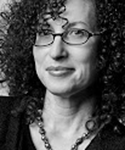I have planted two churches.
When I finished seminary, I wanted to pastor but couldn’t get a call. I went on to do doctoral work and then again felt a clear pull to the church. When I was invited to plant a church with two other pastors, I jumped at the chance. Finally, I was doing God’s work exactly as God shaped me to do it.
The first plant was an evangelical contemporary church. The other leaders were male ELCA pastors, and I am an Evangelical Friends pastor. When I left six years later, we had established a vibrant worshipping community of around 400. I left for three reasons: (1) team leadership is very hard (that is a story in itself), and (2) the resources spent maintaining the church consumed more and more of our time, such that we had less and less impact on people’s lives. (3) God said it was time. Leaving was difficult. I loved the people and the church.
I waited two years and planted another church across town. This one had two visions: to be ethnically diverse, and to be focused on formation and service. I began the church with my Puerto-Rican pastor friend, Miriam. We gathered an ethnically-diverse core team, including Latino and African-American persons. We planted a missional community that was engaged in participatory worship and neighborhood service. It was a house church with no paid positions. Our offerings went to an AIDS orphan project led by Kenyans and to serving our homeless friends. The faith community was small, vibrant, and deeply committed to each other. I left after four years. I left for two reasons: (1) I had mentored two others into pastoral leadership and wanted to give them full rein, and (2) God was calling me to other work. Again, leaving was difficult.
What did I learn? First of all, I didn’t learn this, but you might. I was just being faithful to my call. Women leaders can plant churches. The challenges and blessings of church planting are gender neutral. If God puts it in you to lead, then you lead. Anything else is disobedience to your identity and calling.
Second, I learned that church planting requires lots of space for self-reflection and prayer. Church-planting is not for the faint of heart. It is creative hard work that requires regular soul-searching. I found the challenges invigorating precisely because I couldn’t rely on my skills but instead needed to stay at the foot of the cross and rely on the Holy Spirit.
From the first church I learned that team leadership is the most challenging type of leadership model, and it requires extra time devoted to working on relationships. From the second church I learned that working together as an ethnically diverse team is not the primary difficulty. The real challenge is ecclesiological diversity -- from Pentecostal to Quaker to Reformed traditions. I’m still thinking about how worship seems to be more connected to our identity in Christ than to our skin color.
As a woman church planter did I bring anything unique to these church planting ventures? I’m hesitant to genderize leadership skills, so I’m reflecting on what I brought not as a woman but as a leader. You can make your own conclusions. My motivation was to create communities for people to become more like Christ in character and call. I invested time in discipling and training, and thought deeply about how culture and behaviors shape a community. I did everything I could to empower persons to be creative and make decisions within the defined mission and values of the community. It was a thrill to me to bring people into a living relationship with Christ and then see them set on fire to serve others.
I believe a church is ultimately known by its people as they live like Christ in their everyday lives, and not by its name. Perhaps because I’m a mother it makes sense that my focus was on growth and independence, but maybe that is what the church is really supposed to be about whoever its leader is.
Any thoughts or questions for me?
MaryKate Morse is professor of leadership and spiritual formation at George Fox Evangelical Seminary and director of strategic planning at George Fox University in Portland, Oregon. She is the author of “Making Room for Leadership: Power, Space, and Influence” (InterVarsity).






